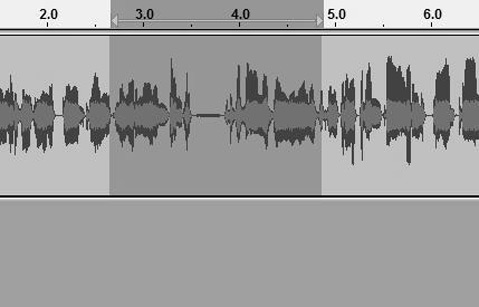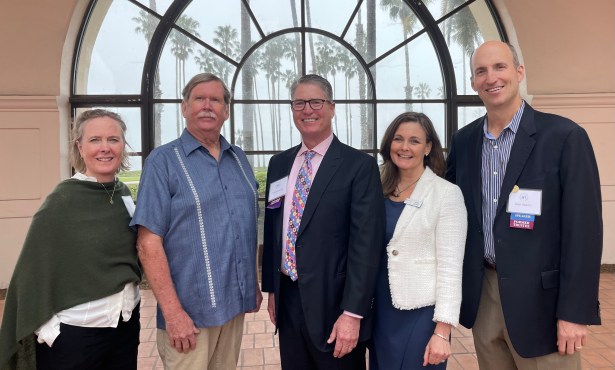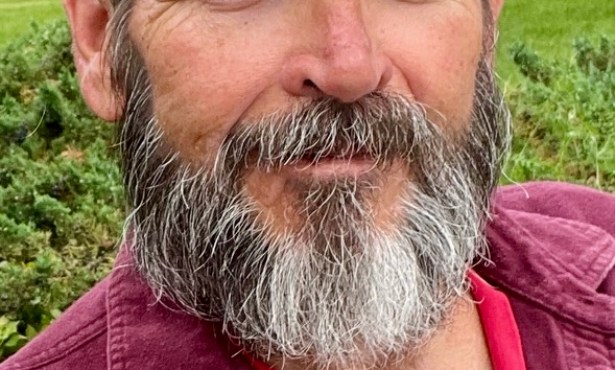Spreading the Word (With Music Under It)
The Anatomy of a Public Service Announcement

Why has it only just occurred to me that, after well over a year on the KCSBeat, I’ve only mentioned this column on the air a handful of times? All the awesome power of a radio station at my fingertips — at every KCSBer’s fingertips — and I seem to have simply taken it on faith that KCSB listeners are aware that they could be KCSBeat readers. Hence my mission for this edition of the column: Make a public service announcement.
I suspect I’ve subconsciously avoided this project because it involves copywriting, a word whose very sound makes me slump over. People at a non-commercial station like KCSB, with a few sterling exceptions, are not particularly well-suited to the advertising arts. I am not one of those sterling exceptions. I blame the stretches I’ve had on commercial radio stations, where I was driven to the brink of personal and professional meltdown by the inanity of the spots they aired over and over and over again. My doctor made me promise never to get within 50 feet of a martinizing-related jingle again.
You can rest assured you’ll never hear such a thing on KCSB. We’re talking about a station whose most popular spots include a monologue from Gil Scott-Heron (of all people) about the dangers of “angel dust,” and a genuinely demonic little number where an anthropomorphic epididymis urges listeners not to kill their parents. Going too far afield is probably not a danger.
Yet I need to get the information across with a minimum of distraction. Ironically, this is probably an easier task — or at least a more fun one — on a nearly-anything-goes station like KCSB than it would be anywhere else.
Ancient freeform radio secret #1: Avoid cliché
I’m right there with Martin Amis in considering all creative efforts to be battles in the greater war against cliché. (This is the only sense in which I will ever be comparable to Martin Amis.) This goes double in the world of radio, where cliché isn’t just a fallback — it’s a way of life. Attempting to get straight to the point without resorting the standard expedients to do so, I came up with this:
It’s KCSB’s past. It’s KCSB’s present. It’s KCSB’s future. It’s profiles of your favorite KCSB programs and interviews with your favorite KCSB DJs. It’s the KCSBeat, the Santa Barbara Independent’s column on all things KCSB. My name’s Colin Marshall. I host “The Marketplace of Ideas” and “Poodle Radio” on KCSB, and, since I write the column, I’ll be really clear on the details: It’s the KCSBeat, every Tuesday, on Independent.com, because why confine your KCSB obsession to the airwaves alone?
Chalk that up, with any luck, as evidence of those mystical truths about radio: Things that look a little ugly on the page can sound good on the radio. I figured I’d take a personal angle but try not to make it sound too much like a testimonial.
Ancient freeform radio secret #2: Use Brian Eno music
If I’ve conveyed anything with my occasional KCSBeat columns on the contents of KCSB’s music library, it’s that you’ll never want for recorded sound with those shelves in reach. As a fan and occasional worshiper of Brian Eno, Roxy Music’s onetime synthesizer operator/avatar of flamboyance and inventor of the genre known as ambient, I check the station’s library first whenever I’m looking for obscure projects with which he’s tangentially involved. Imagine my delight when Small Craft on a Milk Sea, Eno’s new collaboration with Jon Hopkins and Leo Abrahams, appeared in the new-release section.
I knew I could use nothing else for this KCSBeat spot. As in so much else one might do at KCSB, the idea when producing a public service announcement is to be weird (it being important indeed to regularly exercise the valuable freedom of weirdness) but not too weird. Some of the cuts on this album are so vaguely but intensely ominous that using them would run the risk of filling prospective readers with too much amorphous dread to pull up this site. Others show off Eno’s formidable talent as a craftsman of the beatless, but this whole spot is about a column called the KCSBeat. So I wound up laying down the skittering, appealingly nervous “Dust Shuffle” in the background.
Ancient freeform radio secret #3: Turn down the middle of the equalizer
When recording speech over music, it’s all well and good — necessary, even — to drop the volume of the music below that of the speech. But all my radio projects have taught me that it isn’t quite enough; certain frequencies in the words and all the other sounds collide, rendering both less distinct than they ought to be. The trick is to turn down the music’s volume mainly in the center of the equalizer, which represents the range of sound where the human voice resides. That’s a little technical, I realize, but even the non-techiest can conceive of it this way: See those sliders in the middle? Push ‘em down.
Another technique I won through years of grueling experience but will pass on to you for free is that, if you’re working with a found piece of music, use the end rather than the beginning. Typically, musicians will have considerately found a more interesting way of ending the track than the fade-out I would have applied to it. In this case, Eno, Hopkins, and Abrahams wrapped up “Dust Shuffle” with an interestingly dramatic close, so I pressed it into double duty as the interestingly dramatic close of the spot as well.
Ancient freeform radio secret #4: Brevity is the soul of wit, but even if you can’t manage wit, it’s still worthwhile
With ruthless cutting, I brought the total length of the KCSBeat spot solidly under one minute. I’m sure this is the right thing to do for a host of psychological, consciousness-infiltrating, science-of-marketing type reasons, but I just like that it forces me to make it as concise as possible. The message here is clear and present (or at least I hope it is): Your KCSB habit needs feeding. Just the radio won’t do it. So read the KCSBeat. It’s written by a guy possessed of at least the marginal hipness needed to play a Brian Eno cut.
But I’ll let you be the judge. You can listen to the KCSBeat public service announcement right here on this page, where it’s embedded. Soon, you should be able to hear it airing regularly on KCSB — or as often as the DJs feel like playing it, assuming it passes muster with the production people. Even if I have to return to the drawing board, haven’t we all learned a thing or two?



